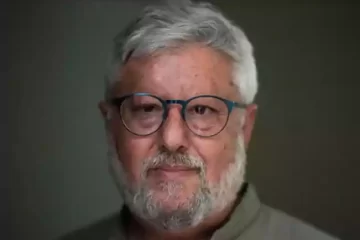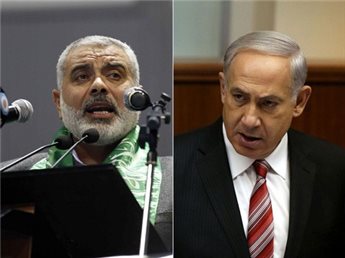The award-winning new Israeli film Beit Lehem (Bethlehem) captured reality with its shocking depiction of the horrific reality we lived through during the years of the second intifada.
Those were horrible years for both Israelis and Palestinians.
So many lives were destroyed by the violence which hit us all, and with it a dimension of hatred across the conflict lines more intense than ever seen before.
I founded IPCRI, the Israel Palestinian Center for Research and Information, a joint Israeli-Palestinian think tank dedicated to advancing the two-state solution to the conflict, in March 1988, during the four months of the first intifada.
The first intifada ignited a spirit of hope as the Palestinian leadership used the popular uprising to put forward an agenda of mutual recognition and a call for compromise based on the pre-1967 borders.
The local Palestinian leadership and the popular uprising imposed that agenda on the national leadership of the PLO, which was in faraway Tunis. In November 1989 the PLO adopted that new agenda, which led to an peace process which unfortunately has not yet come to its inevitable end: a Palestinian state next to Israel, living side by side in peace.
In 1996 we moved IPCRI’s office from Jerusalem to Bethlehem. As a joint Israeli-Palestinian organization we decided that we wanted to give Israelis more opportunities to come to the Palestinian side. Bethlehem was quite peaceful in those days. There was a lot of building and economic growth and a lot of hope.
Initially when Israelis would come to our office for the first time they were afraid and we would have to drive to meet them at Checkpoint 300 (so named because it was 300 meters from Rachel’s Tomb) or at Rachel’s Tomb. From there they would follow us to our office another kilometer south. The second time they came to the office, they would come directly, without fear.
The second intifada officially began with the visit of opposition leader Ariel Sharon to the Temple Mount on Thursday, September 28, 2000. I was in the office in Bethlehem and all was quiet. On Friday, September 29, I was up north on the Wadi Ara road, driving past the Arab city of Umm el-Fahm. There was a demonstration taking place on the road and we immediately noticed that the tone of the language on the signs people were holding was much harsher than we had seen before.
We had dinner that evening in the Arab village Baka al-Gharbiyeh with some friends from Kibbutz Barkai.
After dark the entire area was in flames. Demonstrations broke out in Jerusalem after Friday prayers and spread across the West Bank and all over Gaza. The Galilee was in flames and there was a sense that the country was under siege. Saturday night was Erev Rosh Hashanah and throughout the holiday horrible scenes of violence were everywhere.
During the holiday Knesset Member Avshalom Vilan (Meretz) called me and said, “Gershon, we have to do something to stop this madness.” I made some phone calls and we arranged to visit General Jabril Rajoub, the commander of the Palestinian Preventive Security forces in the West Bank, when the holiday ended Sunday evening.
Vilan had been an officer under prime minister Ehud Barak in the elite Sayeret Matkal commando unit. Barak gave permission for us to enter Ramallah.
I was with a Palestinian colleague and Vilan came with MK Mossi Raz. We met at the Beitunia checkpoint near the Preventive Security headquarters. Both sides knew we were coming and stopped shooting so we could pass.
We parked our cars on the Israeli side and walked across the checkpoint to be taken in Palestinian jeeps to Rajoub’s headquarters.
Over the next few hours we had PLO chairman Yasser Arafat on one phone and Barak on the other, trying to put an end to the violence on the fourth night of the second intifada.
According to all present at the time, we came very close. There was agreement on five out of six points for putting an end to the violence. But we were not successful and the violence continued, reaching horrific dimensions.
The next week I was almost killed at a Palestinian checkpoint in Bethlehem that until then was unmanned. As I passed through the checkpoint, eight Palestinian armed security personnel jumped out of nowhere with AK-47s. One opened my car door and demanded that I drive. Without thinking, I turned off the motor, threw the keys on the floor of the car and demanded that they call Rajoub, or the commander of the Preventive Security Force in Bethlehem, who had visited me in my office that morning.
The guy in the car next to me questioned me at gunpoint about my relationship with Rajoub. As we waited for a response from Rajoub, with his gun almost in my gut, he said “don’t be scared.”
But I was. After about 15 minutes another officer came and said they had orders to safely escort me out of Bethlehem.
That was the last time I drove into Bethlehem with my car during the second intifada. A few days later two Israeli reserve soldiers mistakenly drove into a Palestinian checkpoint and were ordered to drive to Ramallah, where they were lynched by a passing funeral procession.
The West Bank and Gaza rapidly fell into total chaos; many people began calling it “intifouda” (meaning chaos) rather than intifada. The streets of Bethlehem and other Palestinian towns and cities fell under the reign of masked men with guns. There were so many guns on the streets of Palestine in those days, it seemed more people had them than didn’t.
The film Beit Lehem showed that very vividly. As I watched the film and recalled that period I also thought about how different the situation is today. While the occupation remains and Palestinians are still struggling for freedom, there is a return of full law and order in the West Bank. There are no guns on the streets, other than authorized ones in the hands of the police and Palestinian security forces.
The Palestinian security forces coordinate and cooperate in the fight against terrorism. PA President Mahmoud Abbas and his previous prime minister Salam Fayyad passed laws that made it illegal to carry weapons. They rebuilt the rule of law and dismantled the infrastructure of terrorism that had taken hold of the territories.
Watching the film reminded me that the Palestinian leadership in the West Bank retook control of the streets not as a favor to Israel, but as a necessity for their own society. They had the help of the United States and others, but the achievements of creating calm and law and order belong to them and to the Palestinian people.
There is still much to be done to build a Palestinian state and to break free from Israeli control. The film Beit Lehem reminds us of how far they have come.
The writer is the co-chairman of IPCRI, the Israel Palestine Center for Research and Information, a columnist for The Jerusalem Post and the initiator and negotiator of the secret back channel for the release of Gilad Schalit. His new book, Freeing Gilad: the Secret Back Channel, has been published by Kinneret Zmora Bitan in Hebrew, and The Negotiator: Freeing Gilad Schalit from Hamas is forthcoming from The Toby Press.
Published also in the Jerusalem Post


